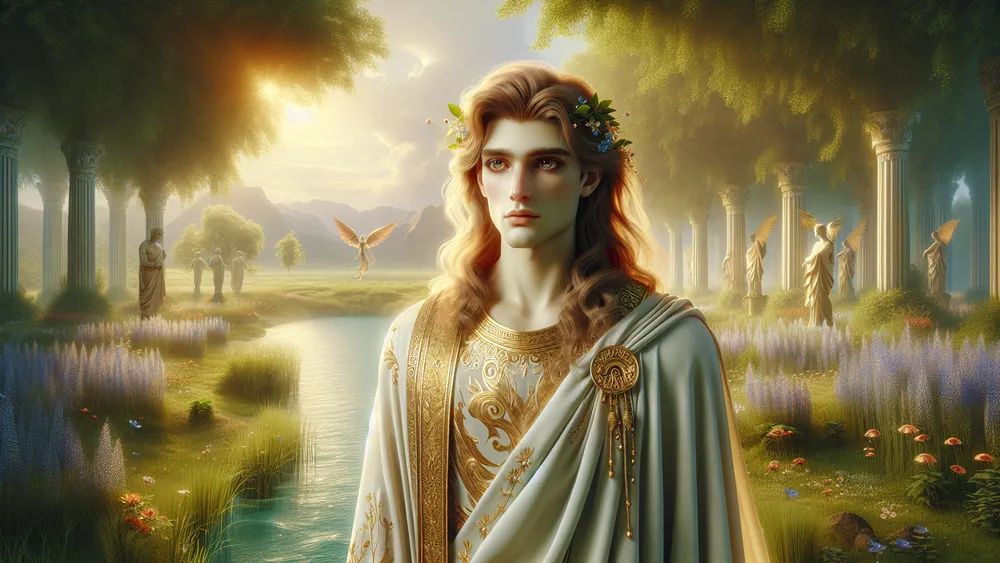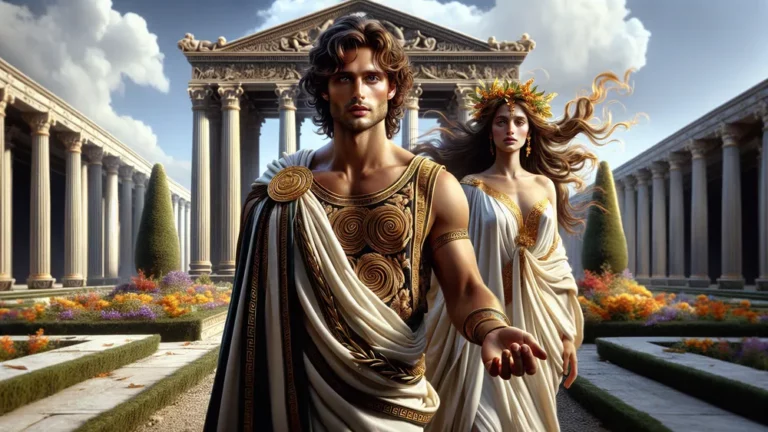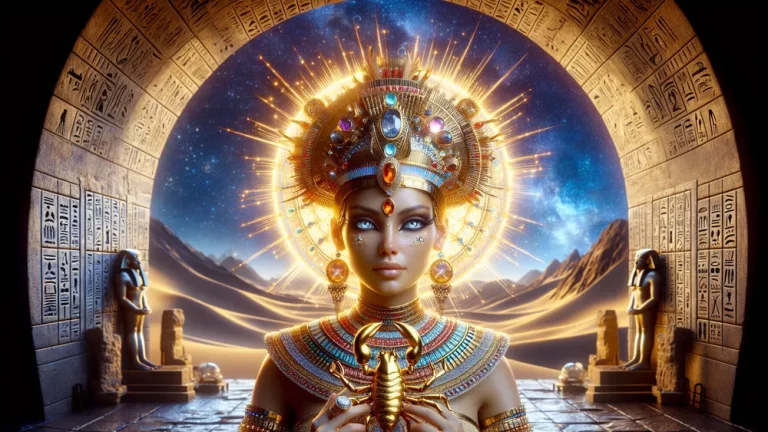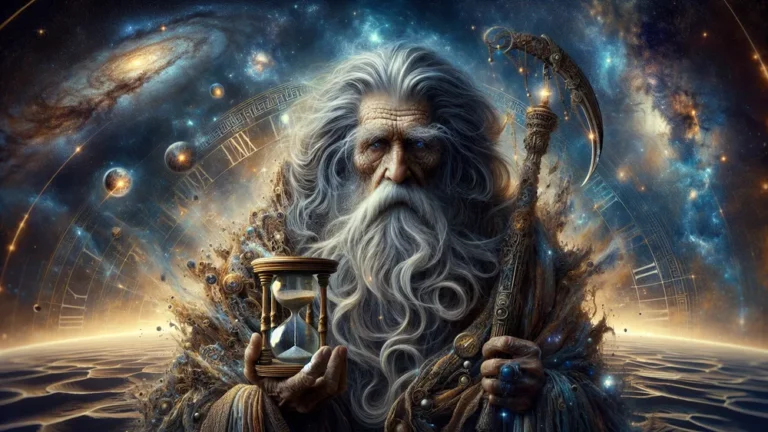Hermaphroditus: Greek God Of Hermaphrodites And Effeminates
In the rich collection of Greek mythology, the character of Hermaphroditus stands out as a special and intriguing figure, showing both male and female features. Think of a place where the limits between genders are fluid, much like colors blending at sunset. Hermaphroditus, child of Hermes, the messenger god, and Aphrodite, the goddess of love and beauty, means this idea of being both things together.
Key Points:
- Hermaphroditus is the child of Hermes and Aphrodite.
- They represent both male and female traits, meaning a mix of genders.
- The main story involves Hermaphroditus meeting the nymph Salmacis.
- Hermaphroditus and Salmacis merge into one being with dual features.
- This myth challenges traditional views on gender and identity.
- Hermaphroditus appears in art as a blend of male and female characteristics.
- Their story influences modern discussions on gender fluidity and identity.
As we explore the stories about Hermaphroditus, this being’s existence challenges usual ideas of gender and identity. From the divine family and early life, to the changing encounter with the nymph Salmacis, every part of Hermaphroditus’ story gives us an idea about ancient Greek thoughts on gender and the divine.
It does not matter if you are new to mythology, this look into Hermaphroditus promises to give understanding about one of the most captivating characters in the Greek collection.
Hermaphroditus: Overview and Key Facts
| Key Aspect | Details |
|---|---|
| Name | Hermaphroditus |
| Parents | Hermes (messenger god) and Aphrodite (goddess of love and beauty) |
| Importance | A symbol of both male and female traits, meaning being two things as one |
| Main Story | The tale of Hermaphroditus and the nymph Salmacis |
| Change | Joined with Salmacis, becoming one being with both male and female features |
| Effect on Culture | Affected old Greek thoughts on gender and identity; seen in art and books |
| Meaning | Shows the fluid nature of gender, the oneness of opposites, and identity complexity |
| Ways This Person Appears in Art | Often seen with both male and female body parts, sometimes in change |
| Impact on Later Societies | Changed Roman myths and Renaissance art; still interests scholars today |
| Current Meanings | Seen as a sign of changing genders and non-binary identity in discussions now |
Where Hermaphroditus Came From
To see how Hermaphroditus began, we need to look into the part about being born as a god’s child and the unusual situations which influenced early life. Their start was different.
Hermaphroditus’ Birth and Family
Hermaphroditus was born because of two well-known Olympian gods, Hermes, and Aphrodite. Hermes, the fast messenger of the gods, stands for communication, travel, and cleverness. The goddess of love, beauty, and desire is Aphrodite. Think about mixing these two strong forces: Hermes’ speed and words with Aphrodite’s charm and want. This special parentage gave Hermaphroditus traits from both, making them of dual nature and very important in Greek mythology.
The birth of Hermaphroditus was not just about two gods coming together but also about their different worlds of influence merging. Hermes’ job as the go-between for gods and humans, added to Aphrodite’s rule over love, created a child meaning the meeting of these areas. In Greek mythology, children from such unions often had their parents’ traits and roles, and Hermaphroditus was no different.
Their existence, which included both male and female qualities, challenged traditional views on gender and identity, by meaning a mix of masculine and feminine features.

Hermaphroditus, born from the gods Hermes and Aphrodite, represents a blend of their traits, merging communication and love while challenging traditional ideas of gender and identity in Greek mythology.
Growing Up
While growing up, Hermaphroditus was raised by the effects of both Hermes and Aphrodite, much like a child who gets traits from both parents. Quick wit and agility were from Hermes, probably teaching about talking and quick thinking, while Aphrodite’s presence meant a surrounding of beauty and love.
Think of a young god learning the tricky parts of both worlds, being the speed of a messenger and the charm of a love goddess. Although specific myths about childhood are scarce, it is easy to see them growing up in a place that celebrated both masculine and feminine traits, getting ready for a special role in Greek stories.
The Story of Hermaphroditus and Salmacis
After looking at Hermaphroditus’ beginnings and early years, let us jump into the well-known story that includes them: the meeting with the nymph Salmacis.
Meeting Salmacis
The story of Hermaphroditus and Salmacis starts with Hermaphroditus arriving at a hidden pool in Caria. Think of finding a quiet and hidden place, an inviting location that calls you to rest. That is exactly what Hermaphroditus felt while walking through the forest and finding the clear waters of Salmacis’ pool.
Unknown to them, the pool had the nymph Salmacis, who was immediately struck by Hermaphroditus’ good looks. Unlike the shy nymphs, Salmacis was bold and direct in her desires. After she saw Hermaphroditus, she was filled with infatuation and tried to approach them. Think about someone deeply interested in another that they cannot hide their admiration.
Salmacis went to Hermaphroditus, offering to share the pool and her company. However, Hermaphroditus wanted to be alone and politely said no, then continued to bathe alone.
Refusing to be turned down, Salmacis watched from a distance, waiting. As Hermaphroditus entered the water, Salmacis seized the chance and jumped into the pool, wrapping herself around them. She prayed to the gods they would never be separated, and her wish was granted in a big and changing way. Their bodies began joining, mixing into one being with both male and female traits. The key points of this story are:
- Hermaphroditus’ arrival at the pool.
- Salmacis’ infatuation and approach.
- Their bodies merging.
The Change and What It Means
The change of Hermaphroditus and Salmacis into one being is one of the most remarkable events in Greek myths. Think of two different colors, such as blue and red, coming together to make a new, unique shade of purple. This merging means joining both male and female traits into one harmonious being.

When Salmacis prayed to the gods to be united with Hermaphroditus forever, the divine response was to blend their bodies, creating a being that showed both genders. This act of change was not just physical but also deeply symbolic, which means the inseparable nature of male and female elements within one form. In Greek stories, this mixing meant more than just a physical change.
It broke the usual limits of gender and identity, which suggests that true unity and completeness come from merging different traits. Hermaphroditus, as a result of this change, became a symbol of duality and unity, showing the balance between opposites. This myth can be an idea of the fluidity of gender and that identity should not be stuck in fixed categories.
By blending Hermaphroditus and Salmacis, the story tells us about how all human traits are connected, just like different threads come together to make one piece of fabric.
What Hermaphroditus Stands For and Their Impact
Now that we understand the change of Hermaphroditus and Salmacis, let’s now look at what Hermaphroditus means in ancient Greek culture and their long-term impact.
What Hermaphroditus Meant in Ancient Greece
In ancient Greek culture, Hermaphroditus meant the ideas of duality and unity, having both male and female traits in one form. Similar to yin and yang, two seemingly opposite forces are connected and depend on each other in the natural world. Hermaphroditus showed that true wholeness and harmony come from the mixing of different elements.
This idea went against the strict gender norms of the time, meaning that identity and existence are more fluid and connected than typically thought. By having both male and female traits, Hermaphroditus was a strong symbol of balance and unity.
To better understand what Hermaphroditus means, it is useful to compare with other mythical figures who also show duality and unity. Here’s a table that points out some of these comparisons:

| Mythological Figure | Culture | Symbolism |
|---|---|---|
| Hermaphroditus | Greek | Duality of gender, unity of male and female traits |
| Ardhanarishvara | Hindu | Mix of Shiva and Parvati, unity of male and female principles |
| Agdistis | Phrygian | Both male and female traits, showing fertility and chaos |
| Tiresias | Greek | Change between male and female, meaning wisdom and gender fluidity |
This comparison shows how different cultures have looked at similar ideas through their mythical figures, each meaning that unity and completeness come from mixing different traits.
Hermaphroditus represents the blending of male and female traits, highlighting the importance of balance and unity in identity.
How Art and Literature Showed Hermaphroditus
In Greek art, Hermaphroditus often appeared with a focus on their dual-gender traits, blending both male and female features. A well-known example is the statue “Sleeping Hermaphroditus” that shows Hermaphroditus lying down on a mattress. From one angle, the figure looks like a beautiful woman. But another angle reveals male traits.
This mixture in the sculpture means Hermaphroditus’ identity, much like how a modern portrait aims to show the many sides of a person’s character. So, they were not just art but also meant to show the complex nature of gender and identity in Greek culture. In writing, Hermaphroditus was also described with an emphasis on their special duality.
In “Metamorphoses,” Roman poet Ovid told the story of Hermaphroditus and Salmacis, saying how their bodies fused together. This story showed unity and duality, which means Hermaphroditus had both male and female qualities. These artistic and written examples were big because they went against the normal views of gender then, giving a more mixed view.
By looking at these examples, we understand how the Greeks thought about and showed complex ideas about identity and life.
Hermaphroditus’ Influence on Other Cultures
Hermaphroditus’ ideas spread far beyond Greece. They reached Roman culture and later the Renaissance. In Roman mythology, Hermaphroditus was often shown similar to Greek art, but with more focus on love and beauty. This matched Roman values then. Roman poets like Ovid wrote about Hermaphroditus in “Metamorphoses”, retelling the story of Hermaphroditus and Salmacis by focusing on the power of love to change things.
This Roman take is a bit like how modern filmmakers remake old movies, adding new ideas but keeping the main story. During the Renaissance, artists and scholars looked back at old myths, including Hermaphroditus, to understand human nature and identity. Renaissance art showed Hermaphroditus with a new focus on the beauty of the human body and the complexity of gender.
For example, the famous statue “Sleeping Hermaphroditus” was found and fixed during this time, symbolizing the Renaissance love for old Greek art and the human body. This new interest can be similar to how today’s artists might rework old figures to talk about modern issues of identity and gender. Through these new versions, Hermaphroditus kept influencing art and culture, showing that their story is still important in different times and places.

Hermaphroditus in Today’s Scholarship
After looking at the history and culture around Hermaphroditus, now we see today’s view. Modern scholars understand and discuss what they mean.
What Scholars Think and Debate
For a long time, scholars have debated the importance and symbolism of Hermaphroditus in Greek myths. Their ideas often show wider cultural and social views. Some scholars see Hermaphroditus as a symbol of gender fluidity and breaking down gender norms. This view is similar to how today people recognize and appreciate non-binary and gender-fluid identities.
By being both male and female, Hermaphroditus means challenging the strict gender lines of ancient Greek society, giving a more inclusive idea of identity. Others, however, understand Hermaphroditus by looking at mythology’s role in explaining nature and human life.
For instance, the joining of Hermaphroditus and Salmacis can appear as a symbol for the unity and balance of opposites, like the concept of yin and yang in Eastern thoughts. This idea suggests that the myth of Hermaphroditus was not just about gender but also about harmony and balance in the universe.
These different scholarly views show Hermaphroditus’ rich and complex symbolism, meaning that one myth can be seen in many ways depending on how it is understood.
Comparing Hermaphroditus to Other Dual-Gender Gods
If you compare Hermaphroditus to other dual-gender gods, there are both similarities and differences. In Hindu tales, Ardhanarishvara is a mix of the god Shiva and his partner Parvati. This mix means the blend of male and female energies. Just like Hermaphroditus, Ardhanarishvara shows unity and balance between genders.
Think about a hybrid car mixing good parts of electric and gas engines; similarly, Ardhanarishvara and Hermaphroditus combine male and female traits to mean a full view of identity. Another comparison is Agdistis from Phrygian stories. Agdistis was born from Zeus and Gaia and had both male and female features.

However, unlike Hermaphroditus, Agdistis’ dual-gender nature was seen as chaotic and later changed by the gods to a single gender. This shows a big difference: Hermaphroditus’ dual nature was accepted, but Agdistis’ was not. In Greek myths, Tiresias lived as both a man and a woman, gaining unique views on gender.
Unlike Hermaphroditus, Tiresias’ change was temporary, yet it still shows the idea of duality and the fluidity of gender. These comparisons suggest how different cultures have seen dual-gender gods, each with their own nuances and interpretations.
- List of dual-gender deities:
- Ardhanarishvara (Hindu mythology).
- Agdistis (Phrygian mythology).
- Tiresias (Greek mythology).
Hermaphroditus shares similarities with other dual-gender gods like Ardhanarishvara, who represents a balance of male and female, but differs significantly from Agdistis, whose dual nature was viewed as chaotic and not accepted.
Pantheon of Greek Mythological Heroes and Figures
Greek myths are full of a wide range of heroes and figures, each having their own stories and specific traits. From the mighty Hercules and his twelve labors to the crafty Odysseus and his epic journey home, these figures have interested people for a long time. To explore all of these intriguing characters, you can check out this list of all the Greek Mythological Heroes and Figures.
This resource gives detailed information on each figure, so you can see their roles and importance in Greek myths.
FAQs
1. Who were the parents of Hermaphroditus?
The parents of Hermaphroditus were the Greek gods Hermes and Aphrodite.
2. What is the significance of the myth of Hermaphroditus and Salmacis?
The significance of the myth of Hermaphroditus and Salmacis lies in its exploration of themes of unity and duality through the merging of their bodies into a single androgynous being.
3. How was Hermaphroditus depicted in ancient art?
Hermaphroditus was depicted in ancient art as a figure possessing both male and female physical traits, often emphasizing their androgynous beauty.
4. Are there other mythological figures similar to Hermaphroditus?
There are other mythological figures similar to Hermaphroditus, such as Ardhanarishvara in Hindu mythology and Agdistis in Phrygian mythology.







